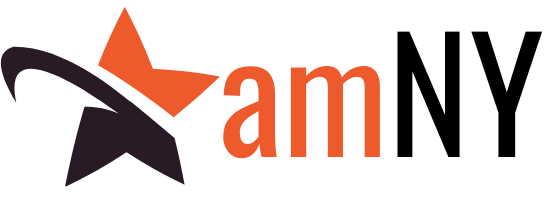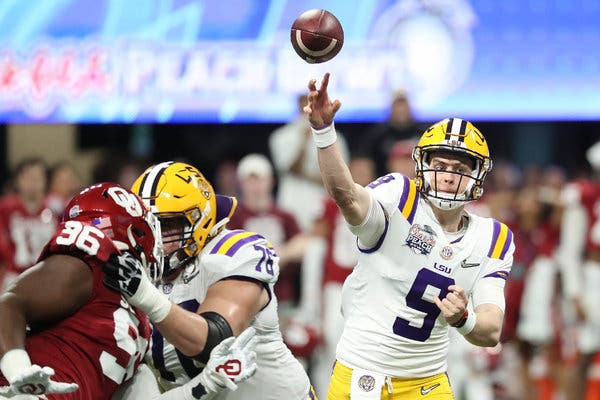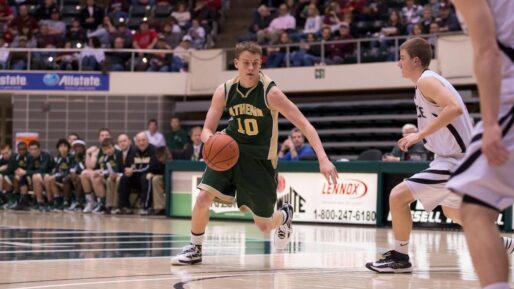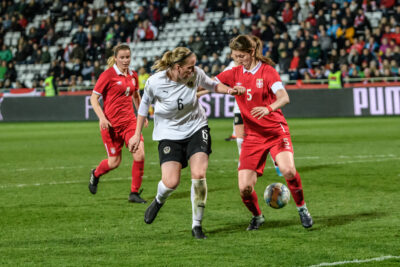Spring Football Sustainability in Question: The Legal Consequences of the AAF’s Abrupt Suspension and the Possible Effects on the XFL 2.0
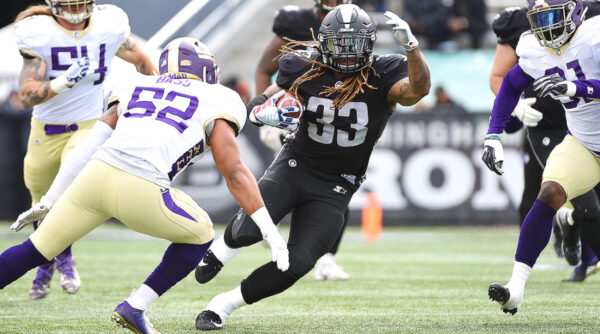
Introduction – On April 2, 2019, just eight games into its scheduled ten-game regular season, the Alliance of American Football (“AAF”) suspended football operations indefinitely, leaving players, fans, corporate partners, and countless others questioning their course of action. The league seemed plagued from the start. From the founder being the son of the co-founder of the previously failed XFL to questionable financial backing, the AAF did not start off on the right foot.
The AAF is not the first spring football league to fail and certainly will not be the last. This comment will begin by discussing the history and organization of the AAF and its distinguishing features. It will then discuss the Sherman Act and the “single entity sports league” upon which the league was founded. Further, it will explain the issues the AAF ran into, its ultimate downfall, and the legal implications of the shutdown. Lastly, this comment will discuss where the league’s players are now, and how the XFL 2.0 can avoid falling into the same pitfalls as its predecessor and the AAF.
AAF Organization
Part 1: Founding
In 2016, Charlie Ebersol who is the son of Dick Ebersol, a co-founder of the failed XFL, produced an ESPN Films’ 30 for 30 documentaries entitled This Was the XFL. The documentary detailed the rise and fall of the league and sparked an idea in Charlie’s mind that he could create a similar spring football league with better execution. According to Charlie Ebersol, of the 200 million people who watch the NFL and NCCA Football, 80 million stop watching sports altogether once football season is over. Similarly, only about 200 out of 26,000 Division I football players play professionally each year. Lastly, just thirty of the eighty-five referees who are trained by the NFL every year make it to the professional level. These figures represent a massive arbitrage opportunity for a spring football league to operate and succeed from early February to late April – the weekend after the Super Bowl until the NFL Draft.
With this information in mind, the Alliance of American Football (“AAF”) was born. On February 6, 2018, Legendary Field Exhibitions LLC was incorporated in Delaware. This was the first step in the process of making Charlie Ebersol’s dream become a reality. Just over a month later, the AAF was announced by Ebersol and Bill Polian, former NFL executive and a good friend of Charlie’s father who agreed to co-found the league and act as its “Head of Football.”
All of the players would sign the same, general contract – three years for a total sum of $250,000. This is far below the league minimum for NFL contracts. However, the players in this league were, for the most part, not NFL-caliber players. Many were either very late-round NFL draft picks or undrafted coming out of college. A few big-name players headlined the league – including Trent Richardson (former third-overall pick), Aaron Murray, Denard Robinson, Christian Hackenberg, and Zach Mettenberger. Former Heisman Trophy winner Johnny Manziel also joined the league midway through the season. These players were the handful that had experienced some success in the NFL during their career but suffered a fall from grace that led them to the AAF. Some of the league’s players wanted to actually have the opportunity to showcase their talent rather than sit on the bench of an NFL team. Others wanted to play to build their skills and help them make an NFL roster. A few simply needed to play in order to make money to support their families. Regardless of their reasoning, they were all under the same, standard contract with no exceptions. Others, such as Colin Kaepernick, wanted to join the league but did not agree with the standard form contract and demanded higher salaries. These individuals were denied and forced to either accept the standard three-year, $250,000 contract or walk away.
Longtime collegiate head coach Steve Spurrier and former NFL head coach Mike Singletary led two of the eight AAF teams. Securing these two distinguished men to be head coaches for teams in the startup league was a huge accomplishment. Having “Samurai Mike” and “The Ol’ Ball Coach’s” names attached to teams gave the AAF more credibility and attracted additional talented players who wanted to learn from the best.
The league would go on to partner with broadcasting networks such as CBS, Turner Sports, and NFL Network to show AAF games on television. However, unlike the deal, these major networks have with the NFL and other professional leagues, the AAF had to pay them to produce and display their games in the first two seasons. Even so, these contracts gave the league legitimate broadcasting deals and proved to fans that the league’s product was good enough to be nationally televised.

The AAF had many distinguishing features to their games such as a ninth referee in the press box (the “Sky Judge”) and an app that allowed fans to track player movements and made betting on the games easier. Additionally, the games were shorter due to fewer commercial breaks and no kickoffs or extra points; teams were required to go for a two-point conversion after touchdowns. Ebersol also implemented a player wellness program which gave players access to individual and couples counseling as well as up to three messages per week. Likewise, the league promised to pay for each year of a player’s postgraduate education equal to the number of years they played in the AAF. Lastly, embedded into the player contracts was the ability to earn more than the standard salary through a commercial license agreement; this operated as a bonus structure for touchdowns, completions, tackles, etc.
Part 2: The AAF App & Accompanying Intellectual Property
The league’s app turned out to be a major selling point. On May 14, 2018, the Supreme Court decision in Murphy v. National Collegiate Athletic Association that it was a violation of the Commerce Clause, and therefore unconstitutional, to prohibit states from repealing their own state laws. New Jersey then repealed the Professional and Amateur Sports Protection Act (“PASPA”) and legalized sports betting within the state. In turn, the Court’s decision opened the door for other state governments to follow suit and legalize sports betting. Since the Murphy decision, thirteen states have repealed their version of PASPA and legalized sports betting with many more assumed to do so in the next calendar year. This decision has created opportunities for companies in the sports technology industry to expand their scope. These companies were originally only selling and/or licensing their products to teams and leagues to gain more information in order to improve their own efficiency. Now, after the Supreme Court ruling and the subsequent increase in legalized sports betting, these data and tech companies can begin licensing their data to legal bookmakers in order to perfect betting lines. This growing market creates a demand to produce and acquire the most precise and cutting-edge technology possible.

The league assembled a team of engineers from Lockheed Martin, BitTorrent, and Tesla to work on the technology with the ultimate goal to track player movement and fatigue rates and incorporate that data into the AAF app. This was supposed to be able to help line makers more accurately create live, in-game betting lines on both the game and player prop bets. The app also contained features that would let fans watch their favorite player for the duration of the game, guess what type of play was going to be called next, and win “points” that could be redeemed within the app. These intriguing aspects of the app attracted fans who wanted to track their favorite players and bet on the game as well as business partners such as MGM Resorts International (“MGM”), who agreed to help develop the sports betting technology, and investors who wanted to have a claim to the intellectual property.
Ebersol has stated that he wanted the app to be used for more than gambling. The app was supposed to be marketed toward a younger demographic who cannot legally bet on the games. Features such as “Pre-cast” would allow these fans to predict what type of play and direction on the field it would be run. On Andrew Brandt’s podcast, Charlie Ebersol described the app as “Madden meets Angry Birds” when discussing its distinguishing features.
However, when the app was activated at the beginning of the season there were a number of unexpected bugs and it was not as successful as anticipated. The app was slow to update live lines and player data was not as user and fan-friendly as expected and did not appear as cutting-edge as it was hyped up to be. While the AAF continued to work on the app, it did not get much better throughout the season.
Part 3: The Single Entity Sports League
The AAF was set up as a “single entity sports league” where all eight of the teams and their employees were owned by the league itself. Unlike the NFL, where all thirty-two teams have individual owners who act independently from one another and compete both on and off the field, the teams in the AAF are all on the same page in regards to marketing, promotion, and broadcast activities. Characterizing a league as a “single entity” doubles as an antitrust defense. Section 1 of the Sherman Antitrust Act deems “[e]very contract, combination in the form of trust or otherwise, or conspiracy, in restraint of trade or commerce among the several States . . . illegal.” Therefore, competing businesses that attempt to restrain competition and create economic harm to others are deemed to have violated the Sherman Act.
When deciding whether competing businesses have violated the Sherman Act, the Court in American Needle v. National Football League determined “[t]he question is whether the agreement joins together ‘independent centers of decision making [and] [i]f it does, the entities are capable of conspiring under §1, and the court must decide whether the restraint of trade is an unreasonable and therefore illegal one.”
Similarly, the Court in Los Angeles Memorial Coliseum Comm’n v. National Football League determined that the NFL was not a single entity league and that the League falsely argued that it’s “‘clubs are not separate business entities whose products have independent economic value.’” The Ninth Circuit also determined that when corporate policies are set by one individual or a parent corporation, the multiple corporations operated as a single entity and did not cross the threshold requirement of concerted activity. For example, if two or more NFL team owners came together and agreed to not sign a certain player, this would be a violation of the Sherman Act since these individuals are supposed to compete against, not conspire with, one another. Therefore, nobody would argue that the AAF was not a single entity sports league since Ebersol and Polian had control over all of the league’s operations.
In 1994, Major League Soccer (“MLS”) was originally founded as a “single entity league”. The league negotiated broadcasting deals, enforced intellectual property rights, and assigned players to the individual clubs. As the MLS continues to grow, they have moved away from a strict “single entity” structure and allowed the clubs higher degrees of responsibility for team construction, stadium deals, and marketing. This is likely the strategy that the AAF sought to implement in the long run as the league grew and gained a greater following.

Photo courtesy of Mary Lederhandler (AP)
“Single entity sports leagues” have many other advantages including the following: little need to negotiate a Collective Bargaining Agreement (“CBA”), an easier way to sell the league in its entirety rather than individually owned franchises, centralized and unilateral decision making, cost savings in regard to marketing and budgeting, and balanced talent across the league as a whole.
III. Downfall
Part 1: Initial Primary Investor
While Charlie Ebersol stated publicly that he and the league went through several rounds of acquiring investors – from Silicon Valley tech companies, established multinational companies, professional team owners, and professional athletes – there was ultimately one man whose funding allowed the league to operate. The league’s primary investor was Reggie Fowler, a limited owner of the Minnesota Vikings until 2014. Fowler came with a questionable past. In 2005, he was a top candidate to purchase the Vikings until his biography contained a slew of false information and forced him into a minority ownership role. Similarly, Fowler was eventually bought out by the team due to reports that he had lost control of his companies due to substantial debt. This raised a question of liquidity and ultimately resulted in the businessman relinquishing his ownership interest. However, this history did not dissuade Ebersol from trusting Fowler as the league’s primary investor. Fowler committed $50 million in equity and a $120 million line of credit over three years. The $120 million credit was withdrawable in eight separate $15 million increments at the league’s discretion. This commitment gave Fowler 31% ownership of the AAF.
Before the season even began the AAF experienced financial mishaps. Fowler’s agreed-upon $15 million installments were not coming in as promised and the league was $13 million in debt on Christmas day – weeks before training camp was set to open up. Ebersol and Polian began discussing their options. Partnering with XFL founder Vince McMahon came up, but the possibility that they would have to shut the league down prior to any football actually being played was seriously considered. Ebersol was upset at this idea and continued pushing Fowler to fund the league properly. On December 26th, the AAF received a $13 million deposit from Fowler, and the league was saved – for now.
What Ebersol and Polian did not know was that four of Fowler’s accounts were frozen by the U.S. government on two separate occasions on October 23rd and November 16th in connection with an investigation of bank fraud and operating an unlicensed money transmitting business.
Although funds were tight and shipping crates doubled as football offices for some teams, training camps ran as smoothly as possible. However, after the first week of games, their financial troubles returned and the league missed payroll. Again, the league was at risk of folding. But Ebersol did not give up.
Part 2: New Primary Investor
Thomas Dundon
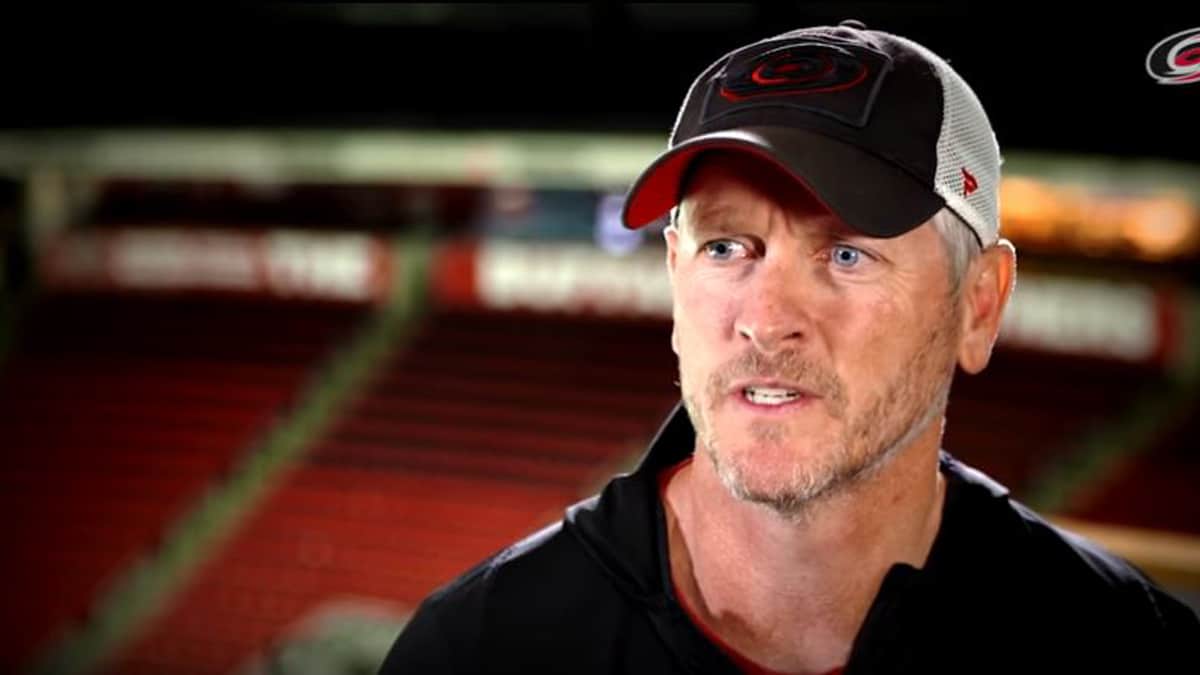
When Thomas Dundon, owner of the NHL’s Carolina Hurricanes, was initially asked to invest in the startup league he declined. At first, he thought the league was too risky and would not garner the necessary attention needed to succeed. However, after the first week of play and impressive television ratings, he began to think otherwise.
Once the league moved on from Fowler and began looking for a new primary investor, Dundon’s name came up once again. After multiple phone calls between him and the league, the owner of the Carolina Hurricanes agreed to become the AAF’s primary investor. With this agreement, Dundon claims he gained majority control and “Final say in everything. Like any other business.”
However, Dundon’s intentions for funding the league were immediately questioned. Members of the media believed he was only dedicating money in order to eventually dissolve the league and keep the sports betting technology for himself, even though the terms of the partnership agreement are largely unknown. In an attempt to ease the media’s concerns about his intentions, Dundon stated “[a]s long as the league is performing there is an unlimited amount of capital. I have more money than the league needs.” He is also quoted saying “I think the probability of this being very successful is as close to certain as I can be,” and “I do not see any scenario where this is not successful.”
These concerns are governed by the fiduciary duties that directors of corporations owe to their shareholders. The duties of care, loyalty, and good faith would all be in question here. The duty of care requires directors to act with the “the care of an ordinarily prudent person in the same or similar circumstances.” The duties of loyalty and good faith are somewhat intertwined and require a director to “exercise [his] institutional power over corporate processes . . . only in a good-faith effort to advance the interests of the company.” If Dundon was truly purchasing the AAF with the intent of shutting the league down and keeping the intellectual property for himself he would certainly be violating his fiduciary duties owed to the league’s employees and business partners – its shareholders.
Regardless, Dundon promised $250 million to continue league operations. Since the league documents are not open to the public, the terms of this agreement are largely unknown. Therefore, how much ownership interest he was granted, what kind of voting rights he had, and what types of security interest he had in his investment were all unanswered questions. However, we do know that Dundon’s investment demanded Ebersol to give up his voting chair and that it was not a one-time, lump-sum payment. The investment was prorated over each week for the first three seasons. While Dundon played up the $250 million investment to the public, in private he characterized his funding as “buying the option” on the league. Essentially, he was banking on the league’s future success and ability to garner a relationship with the NFL as its developmental league. Therefore, in the first year Dundon dedicated $70 million and would pay an installment of about $15 million each week to keep the operations running smoothly. This agreement left Dundon with little to no future downside and was far better than the system in place with Reggie Fowler as the primary investor where the ability to make payroll was always in question. In fact, Fowler was arrested on April 30, 2019, charged with bank fraud and operating an unlicensed money-transmitting business, and will face up to seventy years in prison.
Robert Vanech Lawsuit

At this time, Ebersol was sued by Robert Vanech who claimed 50% ownership in the league. In Vanech’s complaint, he claims that he and Ebersol came up with the idea for the AAF together and were business partners until Ebersol went back on their agreement and cut him out of the league completely. Vanech details the “co-founders” relationship in the complaint and claims that he is the one who came up with the idea of an “alliance” between the teams, players, and fans. This “alliance”, as Vanech claims, was the motivation for the eventual name of the league – The ALLIANCE of American Football. Since Vanech claimed he was an equal co-owner in the league, he believed he should have a say in who the league brought in as an investor, and thus gained ownership interests.
With this lawsuit hanging over their heads, Ebersol and Polian continued to try to make the dream league become a reality. As is with any start-up, you need funding via a primary, majority investor, and Thomas Dundon was their only hope.
Part 3: Suspension of Football Operations
According to Dundon, Vanech’s lawsuit and other alarming facts about the league’s financial situation at the time were not disclosed to him prior to agreeing to fund the league. Still, Dundon believed the league would succeed if they could partner with the NFL as a developmental league and secure a “remunerative broadcast deal.” His efforts on both fronts fell short and the league was left in the same spot they were in when Dundon first took over the league. With the AAF destined to operate at a loss for the foreseeable future and about $70 million already invested in the league, Dundon decided to cut his losses and pull his financial backing before the ninth week of the regular season. Therefore, on April 2, 2019, the AAF suspended football operations and five days later filed for Chapter 7 bankruptcy. Players, coaches, team executives and employees, and business partners were left to pick up the pieces of the shattered league.
IV. Legal Effects of the Shut Down
Part 1: Actions by AAF Players
On April 10, 2019, a week after the league suspended football operations, two players – Colton Schmidt and Reggie Northrup – filed a class-action lawsuit in California against Legendary Field Exhibitions LLC, AAF Players LLC, AAF Properties LLC, Ebersol Sports Media Group LLC, Thomas Dundon, and Charlie Ebersol. About a fifth of the AAF players joined the class. The suit carries a variety of claims including breach of the implied covenant of good faith and fair dealing, violation of the California Labor Code and Business and Professions Code, and many others.

Photo courtesy of Phelan M. Ebenhack (AP)
Thomas Dundon has since filed a motion to dismiss the claim against him for lack of personal jurisdiction, arguing that he is a Texas resident and “does not have the requisite minimum contacts with the State of California[]” to avail himself of the jurisdiction of the state. In case his motion to dismiss is denied, Dundon has also filed a motion to transfer the case to either the Northern District of Texas, where he lives or the Western District of Texas, where Legendary Field Exhibitions’ bankruptcy proceedings are taking place.
Another action has been taken against the league by team employees John Swope and Jay Roberson in U.S. District Court for the Northern District of California. This action claims a violation of the federal Workers Adjustment and Retraining Notification Act (“WARN Act”) by the league.
On top of this, an agent for an unnamed AAF player claims the player wellness program and commercial license agreement described by Ebersol were non-existent.
Breach of Implied Covenant of Good Faith and Fair Dealing
The complaint alleges that statements were made by Ebersol which implied the long-term sustainability of the league. These statements included “if you are not committed seven to ten years, you are not taking this seriously[]”, multiple occurrences where he required multi-year agreements and contracts, and restrictions within the standard form player contracts from playing or attempting to play football “for any team, league or association of teams other than the team to which Player is allocated by the Alliance . . ..” These statements led the plaintiffs to claim that the defendants implicitly owed them a duty to act in good faith and fair dealing. Therefore, this duty combined with the league’s shut down just eight weeks into the season should support a breach of that duty and be awarded damages arising from their breach of contract.
Violation of California Labor Code §201, et seq. and the California Unfair Competition Law
California Labor Code §201(a) states “[i]f an employer discharges an employee, the wages earned and unpaid at the time of discharge are due and payable immediately.” Since the AAF suspended football operations and dismissed all of the players they clearly violated this law. The players would only be able to collect for the amount unpaid at the time of suspension as well as up to thirty days after the suspension.
The plaintiffs then go on to claim that failing to pay them for their services to the league “constitutes an unlawful, unfair or fraudulent business act or practice, in violation of the California Unfair Competition Law provided by the California Business and Professions Code §17200.” The California Unfair Competition Law states that “…any unlawful, unfair, or fraudulent business act or practice…” shall be deemed unfair competition.
These claims are similar to those of the directors breaching their fiduciary duty to act in good faith and fair dealing.
Fraud and False Promise
The plaintiffs go on to claim that the defendants “concealed and suppressed a material fact about their intentions for the long-term viability of the [AAF,]” and it is that intentional misrepresentation that led the players to participate in the league. They also allege that they would not have played in the league and thus:
“[subject] themselves to serious risk of physical harm or damage to their health, and would not have foregone other financial opportunities and entered into contracts with the Defendants . . . if Plaintiffs know that league was not financially viable from the outset and that the intent of its main investor was to fraudulently, deceptively, and pretextually acquire underlying intellectual property and/or technology from the league and then cease league operations.”
This claim is clearly aimed at Thomas Dundon, whose intentions for the league were immediately questioned when he became the new primary investor and chairman of the AAF. If the plaintiffs are able to prove what everybody thought – that Dundon was only interested in investing to suspend football operations and take ownership of the intellectual property – they will likely prevail on their claims of fraud and false promise and be awarded compensatory, as well as punitive, damages. Even if they can only prove that Ebersol, not Dundon, was the fraudulent party by misrepresenting the league’s viability to Dundon, the plaintiffs might prevail on their claims and be awarded the necessary damages.
Ebersol has since alleged that the players committed fraud in their complaint and therefore should be “barred from claiming any injuries or damages because such injuries and damages are the sole, direct, and proximate result of Plaintiff’s conduct.”
WARN Act
In a separate action, Birmingham Iron employees John Swope and Jay Roberson have brought suit against the league for violating the federal WARN Act. The WARN Act requires employers with at least 100 employees who work at least 4,000 hours combined per week to give a 60-day notice of a mass layoff or plant closing. An employer is not required to give such notice when the employer is “seeking capital or business which would have enabled the employer to avoid or postpone the shutdown.” The employer is also not required to give such notice when the layoff or plant closing is “caused by business circumstances that were not reasonably foreseeable as of the time that notice would have been required.
Ebersol and Dundon will argue there were unforeseeable business circumstances – the NFL would not agree to a partnership – that forced the layoff. Dundon will also argue that he cannot be liable because Ebersol withheld information from him prior to his commitment to become the league’s chairman. This could absolve him of any liability in this matter because his discovery of the league’s financials and impending litigation certainly constitute unforeseeable business circumstances.
On the other hand, the players will argue nothing changed from the beginning of the league to the time of suspension and, thus, they were entitled to a 60-day notice of league suspension. This is evidenced by the league not losing any major contract, no sudden external change such as a stock market crash, and no player strike. If the players prevail on their claim here, they would be entitled to back pay for each day of violation at the average rate received as well as any benefits they were entitled to.
Part 2: Bankruptcy Proceedings
Chapter 7 Bankruptcy
Along with the class-action suit, the league must complete bankruptcy proceedings to determine how insolvent it truly was at the time the league was shut down. The league’s bankruptcy documents value the league’s assets at $11.3 million compared to $48.3 million in liabilities. Chapter 7 bankruptcy differs from other chapters in that it is well known as the “liquidation” chapter. Companies who file Chapter 7 Bankruptcy are insolvent and must liquidate whatever assets they have in order to pay off their creditors. Creditors are separated into two classes: secured and unsecured. Secured creditors have priority in a company’s liquidated assets over unsecured creditors. To become a secured creditor, you must first agree to a specific contract called a “security agreement” and file a UCC-1 Financing Statement with the state’s corporate authority, usually the Secretary of State or Bureau of Corporations. Generally, these agreements stipulate that the debtor gets something – usually money – from the creditor by putting up some property as collateral.
When the AAF filed for Chapter 7 Bankruptcy they owed $9,642,171 to secured creditors and the remaining $38,724,017.90 to those whose interests are unsecured.
Dundon Charges “Misrepresentations” by Ebersol
Thomas Dundon, surprisingly, filed as an unsecured creditor in the AAF’s bankruptcy proceedings. Dundon is a named defendant in the class-action lawsuit against the league and the individual who suspended the league’s football operations, and thus, driving it into bankruptcy. However, Dundon claims that Ebersol and Legendary Field Exhibitions LLC withheld important information about the league’s financials prior to agreeing to become the league’s primary investor. Specifically, Dundon asserts that Ebersol and other league directors represented to him that the AAF could survive the first season with $55 million when, in reality, the league already had $13 million in unpaid debts, a lawsuit pending against them by Robert Vanech for 50% ownership in the league, and a realistic need over $100 million to survive the first season and set itself up for long-term success.
Even if all of this is true and Dundon is determined to be an unsecured creditor he likely would not recover much of the $70 million he invested unless the league’s misrepresentations trigger a new pool of money to be disbursed to creditors from the AAF’s executive and board insurance. This strategy may seem farfetched and unlikely to happen. Hence, the real reason Dundon is taking this course of action is to remove himself from any litigation and prove that he was acting in good faith when he became the league’s primary investor.
Intellectual Property
The intellectual property associated with the AAF app was created in partnership with MGM. In turn, when the AAF suspended its football operations it still had control of the app and the accompanying technology embedded within, even though it had little use for it. Therefore, when the league filed for bankruptcy, it was placed at a disadvantage in bargaining with its partner. The AAF and MGM were assumed to be equal partners in the joint venture of the league’s app. However, in Legendary Field Exhibitions LLC’s bankruptcy filings MGM is listed as a secured creditor and has a claim to $7 million. Since the companies were in on this joint venture together, it greatly benefits MGM to take full control of the project’s intellectual property. In exchange for the AAF divesting itself from its app and the accompanying intellectual property, MGM reduced its claim to $5 million and gave the league $125,000 in cash. This reduced the league’s liabilities by $2 million as well as increased its cash position by $125,000. It also frees up another $2 million that can be paid to unsecured creditors.
V. Future for the Players and Spring Football Leagues
Part 1: Where are the AAF players now?
By suspending its football operations, an impartial observer would think that since the AAF breached contract on all of the standard player contracts, then the players would be free to sign contracts with any league they chose. In fact, the AAF would want the players to find such employment so it would not be liable for potential future lost wages. However, when filing for bankruptcy, the league prohibited players from signing contracts with the Canadian Football League (“CFL”) because they viewed the player contracts as assets rather than liabilities. This prohibition was questioned by many in the media and the players ultimately ignored it and went on to sign contracts with NFL, CFL, and now XFL teams.
At the start of NFL training camp 100 former AAF players had signed contracts with NFL teams, eighty-three of which made the 90-man roster. However, by Week 1 of the NFL season, just seventeen made the 53-man roster and only eight made their team’s active roster. Naturally, these numbers have increased over the course of the season since players are injured, waived, and added to rosters every week. Still, the numbers prove there is a benefit to playing in a spring league and providing NFL scouts with game tape.
Part 2: XFL 2.0
Even with the downfall of the AAF, Vince McMahon and the XFL 2.0 have been unwavering in their pursuit of becoming the next big spring football league. The XFL was a spring football league run by Vince McMahon and Dick Ebersol that played its only season in 2001 and was shut down soon after the conclusion of its inaugural season. In January 2018, McMahon announced he would be rebooting the league in February 2020. Since then, the XFL 2.0 and AAF seemed to be in a race to see who could start their league first. While the XFL 2.0 has yet to officially start, the AAF’s demise makes it seem like the tortoise beat the hare once again.
While it is true that the first league to begin play would likely garner most of the top non-NFL talent, acquire a larger fan base, and have an extra year to work out whatever kinks arose in its operations, a solid business plan paired with stable financial backing is the real key to sustaining a start-up league. The XFL 2.0 is run by Alpha Entertainment, a subsidiary of the publicly-traded company World Wrestling Entertainment (“WWE”), and the infamous Vince McMahon. On March 28, 2019, McMahon sold 3,204,427 million shares – $272 million worth – of WWE stock. McMahon still owns over 28 million shares of WWE and holds approximately 80% of the company’s voting shares. All of this information points to the fact that the XFL 2.0 is far more financially stable than the AAF could have ever dreamed of.
Similarly, WWE already has established television partnerships, great marketing teams, and seemingly endless resources. Like the AAF, the XFL 2.0 is set up as a single-entity sports league and does not have a “lucrative” long-term television contract. However, as long as the product on the field is good, the WWE and Vince McMahon should not have an issue securing such an agreement.

Oliver Luck will be the XFL 2.0’s commissioner. Luck has demonstrated his experience as a sports executive by running MLS teams, West Virginia University’s athletic department, and acting as the president of NFL Europe – another startup football league from the early 2000s. Having a commissioner with such an impressive resume, who played professional football and earned his law degree from the University of Texas, is just another advantage to the league. While executive leadership is extremely important, the XFL 2.0 has acquired Bob Stoops, Jim Zorn, Marc Trestman, and Kevin Gilbride to act as the head coach for four of its eight teams. Each of these coaches has experience at the NFL, NCAA, and CFL levels. Similar to the AAF boasting Spurrier and Singletary as head coaches, having these four men gives the league credibility and entices players to join the startup league.
VI. Conclusion
The AAF can be summed up as a good idea with poor execution. Charlie Ebersol believed he could do what his father could not in 2001. Ultimately, he made too many promises he could not keep and will now face the consequences. While Legendary Field Exhibitions and the AAF may be forgotten in a few years, Charlie Ebersol and Thomas Dundon will be dealing with lawsuits and bankruptcy proceedings for the foreseeable future.
Although the AAF put a good product on the playing field, it may be that fans do not want football year-round. If that is the case, the founder must be able to endure financial loss early on, similar to any startup company. However, with the vast resources available to Vince McMahon, he should be able to keep this rendition of the XFL alive for as long as he chooses. McMahon and XFL 2.0 have the necessary resources at their disposal to create a lasting spring football league.
Here’s to making the Sunday after the Super Bowl a little less sad.
Stephen Dranoff is a guest columnist for The Wrightway Sports Network and a second-year JD/MBA student at the Villanova University Charles Widger School of Law. He earned his B.A. in Finance and B.S. in Mathematics at Muhlenberg College, where he played fullback on the football team. Dranoff is the Vice President of the Villanova Sports Law Society and works for the investment group SeventySix Capital in Philadelphia, PA. He is a well-researched student of the NFL Salary Cap and won the 2019 National Championship at the Tulane Professional Football Negotiation Competition in New Orleans, Louisiana.
